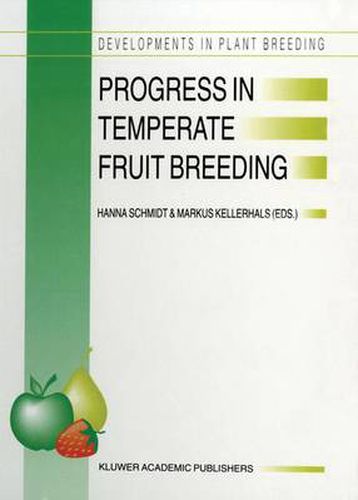Readings Newsletter
Become a Readings Member to make your shopping experience even easier.
Sign in or sign up for free!
You’re not far away from qualifying for FREE standard shipping within Australia
You’ve qualified for FREE standard shipping within Australia
The cart is loading…






This book contains the papers and posters presented at the Eucarpia Fruit Breeding Section Meeting held at Wadenswil/Einsiedeln, Switzerland from August 30 to September 3, 1993. It gives an overview of the latest trends in temperate fruit breeding in Europe and overseas. Three subjects were considered in special workshops: durability of scab resistance in apple, biotechnology and molecular markers. One important aim of modern fruit breeding is stable resistance to pests and diseases. Molecular markers might help to identify the genetic basis of important characters related to disease and pest resistance and components of yield and quality. Gene transfer has been successfully applied in several fruit species. However, public opinion in many countries does not favour this new technology and its products. Despite these new approaches, traditional breeding methods still predominate; many aspects of traditional breeding are considered in this book.
Genetic resources and their exploitation are dealt with in a special chapter. Aspects of breeding minor crops such as walnut, almond, hippophae, cornel, etc. are also considered. Progress in Temperate Fruit Breeding is meant for fruit breeders, pomologists, lecturers, students and growers.
$9.00 standard shipping within Australia
FREE standard shipping within Australia for orders over $100.00
Express & International shipping calculated at checkout
This book contains the papers and posters presented at the Eucarpia Fruit Breeding Section Meeting held at Wadenswil/Einsiedeln, Switzerland from August 30 to September 3, 1993. It gives an overview of the latest trends in temperate fruit breeding in Europe and overseas. Three subjects were considered in special workshops: durability of scab resistance in apple, biotechnology and molecular markers. One important aim of modern fruit breeding is stable resistance to pests and diseases. Molecular markers might help to identify the genetic basis of important characters related to disease and pest resistance and components of yield and quality. Gene transfer has been successfully applied in several fruit species. However, public opinion in many countries does not favour this new technology and its products. Despite these new approaches, traditional breeding methods still predominate; many aspects of traditional breeding are considered in this book.
Genetic resources and their exploitation are dealt with in a special chapter. Aspects of breeding minor crops such as walnut, almond, hippophae, cornel, etc. are also considered. Progress in Temperate Fruit Breeding is meant for fruit breeders, pomologists, lecturers, students and growers.